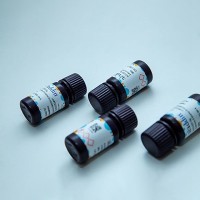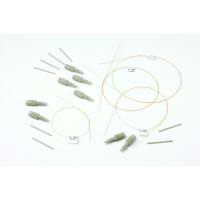Application of Capillary Electrophoresis to Pharmaceutical Analysis
互联网
568
The majority of drugs are either acidic or basic water-soluble compounds, and many drugs may be adequately separated by FSCE. For example, an acidic drug may be analyzed in its anionic form at high pH, and basic drugs may be tested at low pH in their cationic form. Figure 1 shows the efficient separation of a test mixture containing 11 basic drugs using a simple low-pH electrolyte. Zwitterionic drugs (those containing both acidic and basic groups) may be analyzed at either end of the pH range. However, a mixture of neutral and charged drugs would be unresolved by FSCE, and these would require separation by MECC ( see Chapter 12 for further details and discussion of MECC, also called MEKC).
Fig. 1. Electropherogram showing the separation of 11 basic drugs. Separation conditions electrolyte, 50 m M NaH 2 PO 4 (pH 2.4 with cont. H 3 PO 4 ), sample concentration 0.1.mg/mL in water; detection, 200 nm; injection, 5-s pressure; voltage, 25 kV; capillary, 57 � 50 �m; Instrument, Beckman P/ACE 2200 (reprinted with permission from ref. 28 ).









